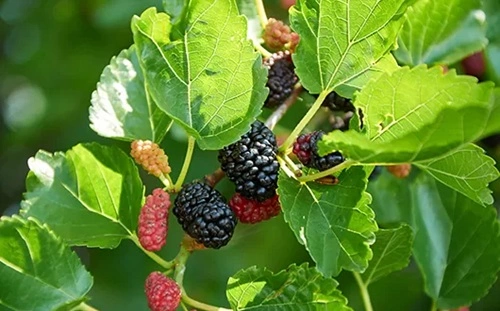First of all, it is not a nationwide ban on the Mulberry Trees right here in the United States, but surely, there are some cities and areas where they have banned planting these trees for obvious reasons. And if you’re here to know why Mulberry Trees are illegal or banned in some places, just keep on reading to find out the best possible answer to that. Here we go.

Where Are Mulberry Trees Not Allowed?
Not every state has prohibited mulberry trees; however, some cities and regions have certain restrictions, especially on the white mulberries or the ones that emit an enormous amount of pollen.
For instance, cities such as Tucson (Arizona), Las Vegas (Nevada), El Paso (Texas), and Albuquerque (New Mexico) have refused to allow the plantation of new mulberry trees. These rules usually focus on male white mulberries as they are the ones that release the most pollen.
There are some states that are more restrictive in these cases, like Illinois, Kentucky, and Tennessee have gone as far as to put a complete ban on mulberry trees. In contrast to this, in the states that are not mentioned, like Minnesota and Pennsylvania, white mulberries are considered “invasive,” hence they grow uncontrollably and are bad for the local ecosystem. In such areas, if you are found to have planted mulberry trees, you may have committed an offense. Make sure you ask your city or state’s officials for their advice before planning on any planting.
Why Are Mulberry Trees Considered a Problem?
The ban on the introduction of mulberry trees suggests, at first, the image of a tree that is no different from others. However, some questions need to be answered to arrive at the truth of this matter. Here:
1. Pollen Problems
Male mulberry trees produce a vast amount of pollen. For those who are allergic, this is terrible, as it may cause allergic reactions, sneezing, coughing, and even worsen their asthma. The local authorities’ efforts to improve the quality of the air and reduce the possibility of such an allergy usually lie in the removal of such trees.
2. Messy Fruit
The fruit is scattered on the sidewalks, driveways, or patios, leaving black, sticky spots. The cleaning process in itself, in this case, is just a chore, and this right here is a good point against these trees.
3. Aggressive Roots
Some researchers have stated that mulberry roots are capable of growing at an intense rate and reaching a width of several meters. The roots are so aggressive that they have been seen to push up through the ground, block the underground pipes, or even cause severe cracks and damage to the road surface, which is often a financial burden to a lot of residents and may have to undergo repairs.
4. Rapid and Uncontrolled Growth
The birds that eat and distribute the seeds are responsible for the problem of the mulberry trees sprouting everywhere. The extra trees will grow where they are not supposed to, including gardens, parks, and around seedlings. Such trees tend to grow quickly, hence being a big issue to the indigenous plants because the latter will have no space to grow and thrive.


















